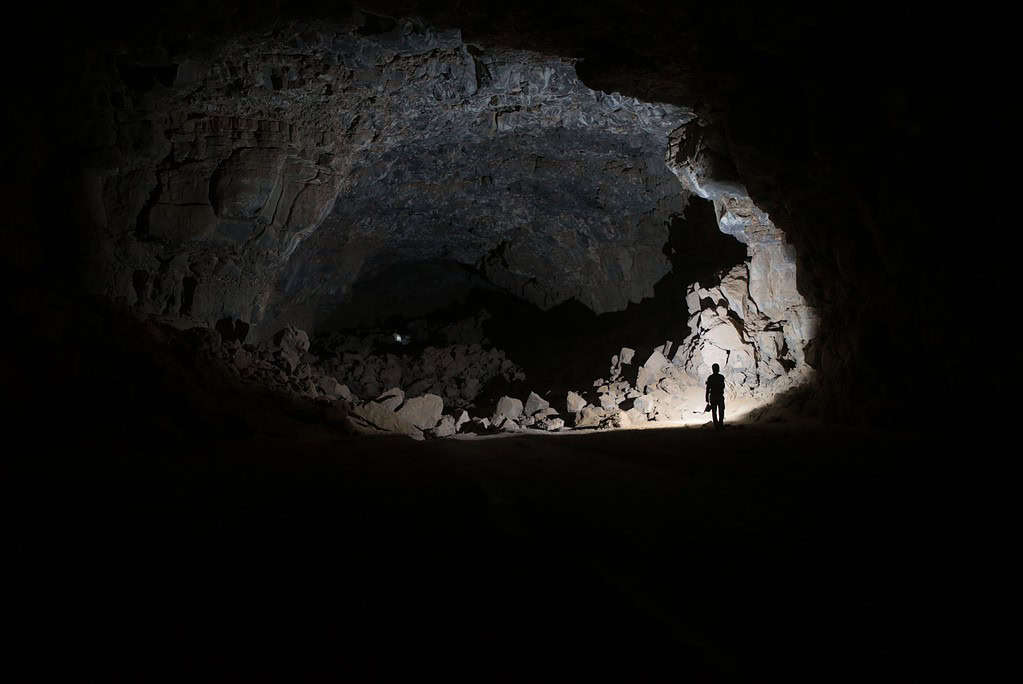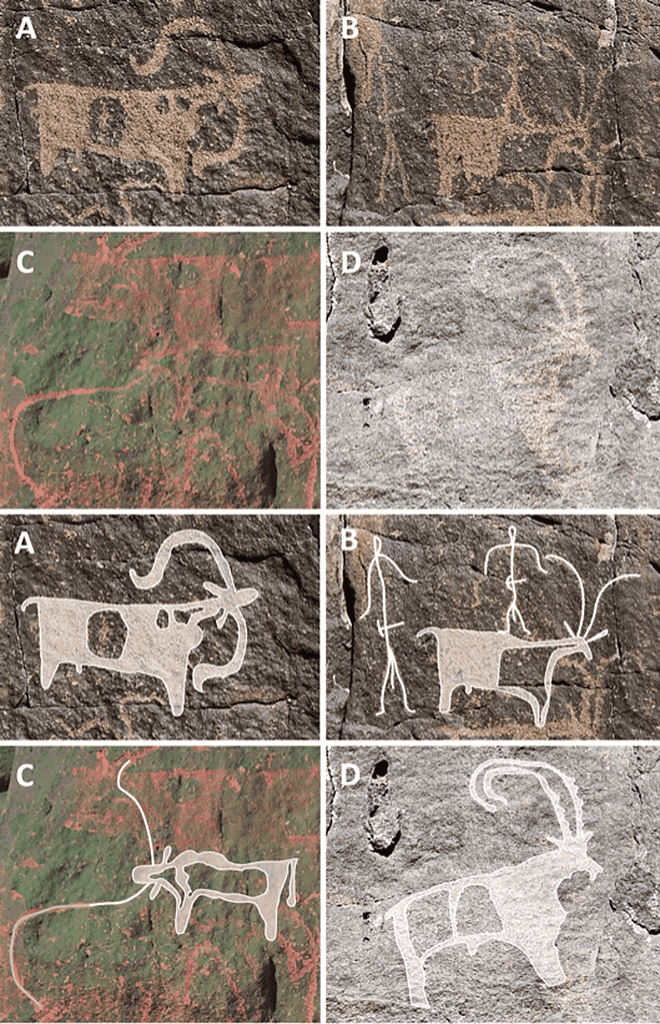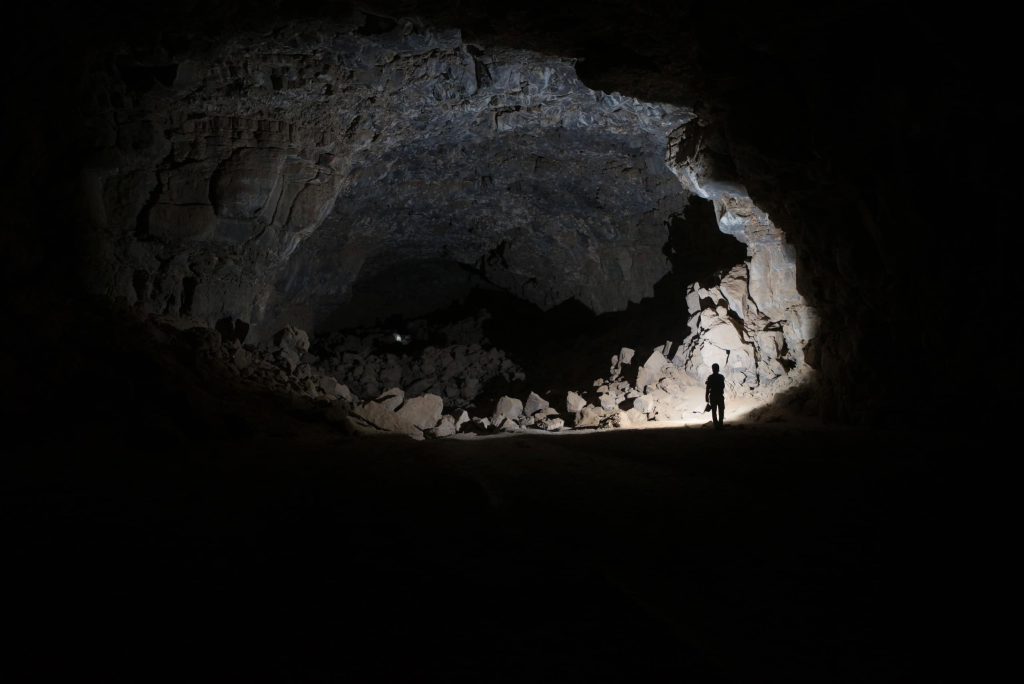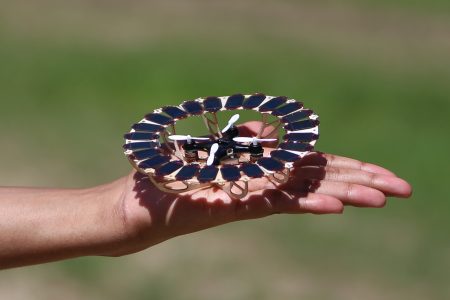In the dry terrain of Arabia, archaeologists usually don't discover many items. The heat dries out organic matter, making it fragile and unlikely to be preserved. However, researchers found an unexpected ally in a lava tube. As per a recent report, people have sought shelter in this lava tunnel for over 7,000 years, leaving behind many items and artworks.

Volcanic Rock and Early Shepherds
A lava tube is a natural tunnel-like structure. The upper part of the volcanic flow cools and solidifies, while the molten lava beneath continues to flow beneath this solidified crust. This creates a hollow, tube-like structure that can differ in size and length.
This is also the case of Umm Jirsan. This is essentially a system consisting of three volcanic passages divided by two collapses. It measures 1481.2 m in length (just under a mile) and has a height of 8-12 m (26-39 ft).
The site has been known to the Saudi Geological Survey for decades now, and local people have of course known Umm Jirsan forever. That said, the site had never been properly investigated or surveyed by palaeontologists or archaeologists. Its recognition as an archaeological site is new,” says Mathew Stewart, the lead researcher and a Research Fellow at Griffith University’s Australian Research Centre for Human Evolution (ARCHE), for ZME Science.
Stewart and colleagues found a lot of archaeological evidence at Umm Jirsan. The earliest of these dates to around 10,000 years ago, and the latest to some 3,500 years ago. They found depictions of cattle, sheep, and dogs — a sign of the pastoral history of these populations. However, the volcanic tunnel was probably not inhabited continuously.

Intermittent Shelter
The density of items is relatively low. This suggests people didn't stay at the site continuously. Instead, they used it as a temporary refuge. Travelers (especially shepherds) moving between various oasis settlements likely used it as a stopping point. In the harsh desert, having access to such a stopping point would have been very valuable.
“Based on the low density of lithics recovered from the excavation, as well as from the surrounding landscape, we suspect that visitation to the site may have been rather transitory. It’s clear that people knapped stone tools on site, as well as lit fires and cooked and processed food. “
The research team also used isotopes to recreate the diets of humans and animals at the site.
These isotopes accumulate in the tissues differently depending on the types of foods consumed. For example, in the context of the archaeological studies at Umm Jirsan, isotopic analysis of animal remains helped the team determine that livestock mainly grazed on wild grasses and shrubs, characterized by specific isotopic signatures.
Similarly, the analysis of human remains reveals a diet rich in protein and increased consumption of “C3 plants“, indicating a shift towards oasis agriculture. This technique provides a detailed picture of dietary habits and environmental adaptations, offering insights into agricultural practices and the ecological conditions of past civilizations.
More to be discovered
Modern archaeology is largely about understanding how people used to live. While amazing structures and artifacts can still be found, archaeologists are increasingly interested in the lifestyles of ancient populations. This type of study is not new — but it’s new for Saudi Arabia.
“While caves and lava tubes are significant in archaeology and Quaternary science around the world, our research is the first comprehensive study of its kind in Saudi Arabia,” said Professor Michael Petraglia, Director of ARCHE. He added that “These discoveries show the great potential for interdisciplinary investigations in caves and lava tubes, providing a unique glimpse into the ancient history of Arabia.”
Arabia’s history holds a long occupation of thousands of years, and we have only just begun to explore what lies beneath the surface, waiting to be uncovered.
Sure, the sun Extreme temperatures and heat are foes of archaeologists. However, natural shelters like lava tubes can preserve the history of the people who lived in the area.
“The region has a rich Neolithic and Bronze Age archaeological heritage, as evidenced by the thousands of stone structures scattered across the landscape. However, this is the first documented evidence of human settlement in such a location in northern Arabia. This suggests that underground sites were important areas of habitation that have been overlooked until now. These and other cave sites hold great potential for preserving organic remains such as bone and deeply layered sediments.”
Journal Reference: Stewart M, Andrieux E, Blinkhorn J, Guagnin M, Fernandes R, Vanwezer N, et al. (2024) First evidence for human occupation of a lava tube in Arabia: The archaeology of Umm Jirsan Cave and its surroundings, northern Saudi Arabia. PLoS ONE 19(4): e0299292. https://doi.org/10.1371/journal.pone.0299292









